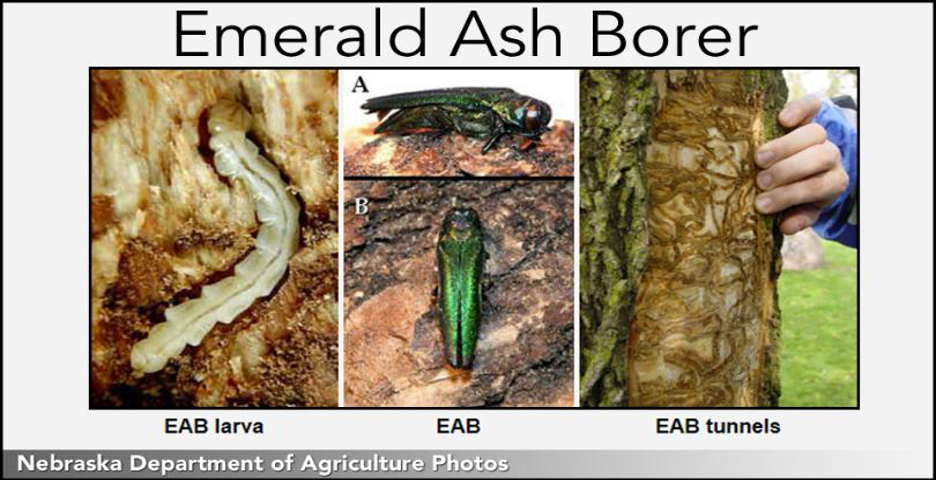If you are visiting this blog, I need not describe the various benefits that the forested lands of the world provide. For this post, we will zoom in on the northeastern United States, and more specifically, Western New York (WNY). The significance of the very important genus of Fraxinus in WNY forests may also be familiar to most. The ash’s of New York, as well as most of North America and Europe, is under attack from an Asiatic invasive insect introduced here in the 1990s. We can touch upon the impacts of the Emerald Ash Borer and possible Ash restoration, as well as what happens if the ash disappears from our forests.
Read moreDoes the Ash species stand a chance in Western New York? If not, what will replace it? A story of the Ash species, the Emerald Ash Borer and the future of the trees niche.
Figure 1: The EAB larvae, adult and the networks they make under Ash bark (Emerald ash borer expands presence into Saunders County)




